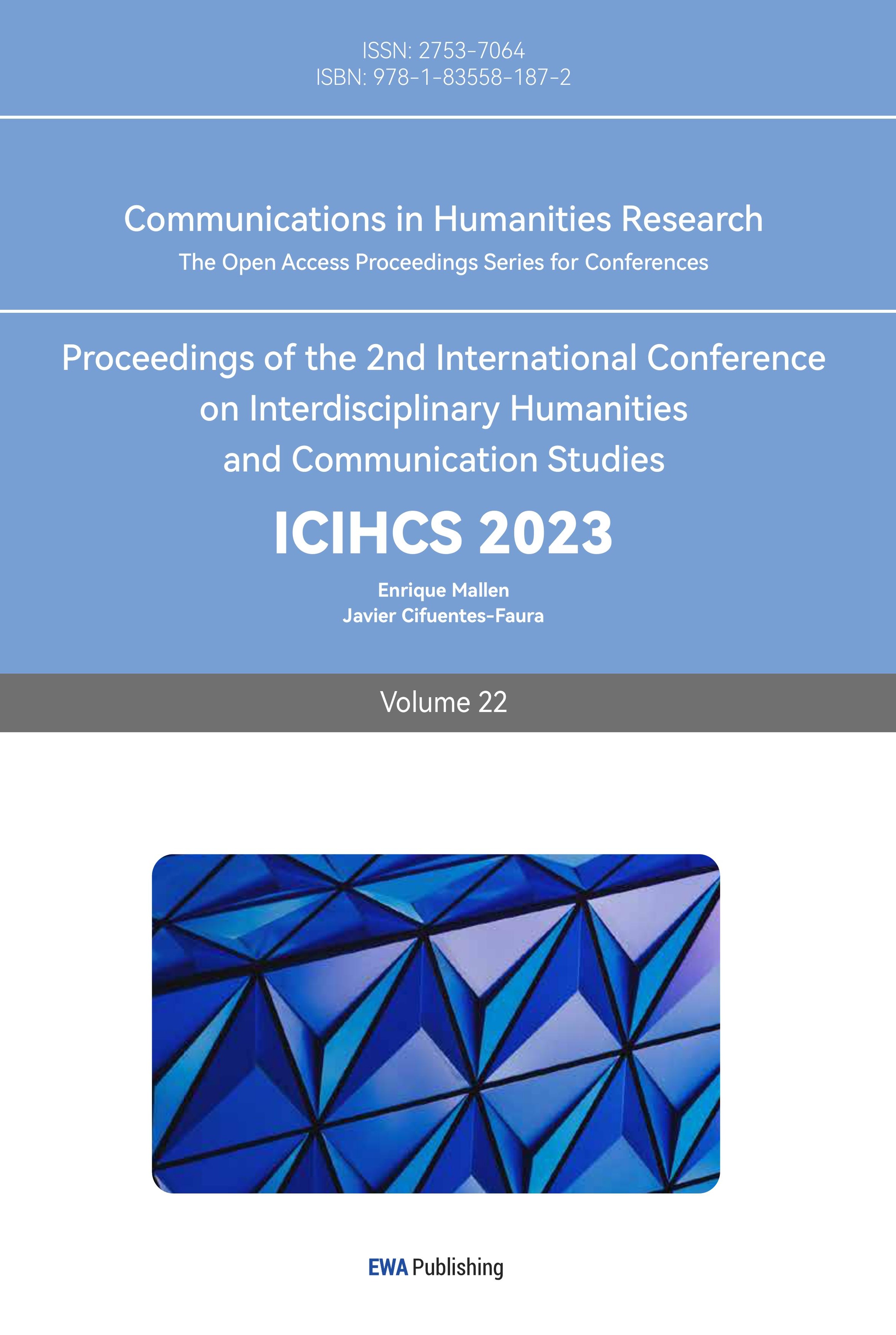1.Introduction
Many businesses and enterprises use new media to broaden their sales channels, that is, to join social e-commerce. ByteDance Uses its social software, TikTok, to build a new e-commerce platform highly dependent on TikTok. The e-commerce platform has proliferated and become essential to TikTok’s revenue. Social e-commerce is an activity and transaction completed through a social media environment [1]. Social e-commerce is not only emerging in recent years. Its rise is a part of the development of Web 2.0. It is the second stage of the Internet, characterized by interaction and user-generated content. It can collaborate through social networks, allowing users to interact, share, and create content on a platform [2]. There are also many studies on how social e-commerce can promote business development, such as E-commerce as a tool for developing small businesses. The role of social media as a platform for E-commerce is to increase customer loyalty through direct communication, increase participation, and accelerate transaction speed, thereby reducing enterprise costs [3,4].
Although the current social electricity is standard in each big social media and is also recognized in the industry as a more dynamic business model, in the past ten years, rarely large and influential social electricity company (or social electric business platform), rarely numerous, close contact between members, and famous social electricity groups, in terms of the operation principle of social e-commerce, social e-commerce is just a marketing model for merchants or companies, so it is normal not to produce the above phenomenon. Social media platforms are an essential guarantee for social e-commerce, but there are other beneficiaries of social e-commerce. At the same time, social e-commerce brands must maintain customer relationships, increase attractiveness by creating digital experiences, and strive to attract new customers while retaining existing ones [5]. From the above problems, social e-commerce merchants seem unsuitable to be integrated, and social media companies are not keen on social e-commerce. However, TikTok made “unreasonable” decisions and established TikTok shops. TikTok shops were also “unreasonable” and developed rapidly together with TikTok in recent years.
Social software is a core element of social e-commerce, which can help users generate content and improve customer interaction [6]. Whether it is disseminating relevant products, services, and brand information and providing opportunities to interact with customers or the difference between the user groups of social software in shopping behavior or hobbies [7, 8]. Therefore, the success of the new e-commerce model based on the specific social software TikTok is also likely to be due to 1) The direction of TikTok’s new business model is to innovate and improve. At the same time, meeting user demands continuously, maintaining user loyalty, and seeking new revenue opportunities to ensure long-term development and success. The platform’s growth results from the critical role played by users and content suppliers in this process [9]. 2) This new e-commerce model is related to the social way of TikTok itself in publishing short videos by many more popular celebrity bloggers. TikTok provides various ways for online celebrities to earn benefits, increase influence, and build a fan base. Through advertising, live broadcast e-commerce, incentive mechanisms, and a robust recommendation algorithm, TikTok has supported online celebrities’ success and sustainable development, making them stand out in the highly competitive online entertainment industry [10].
Why did TikTok launch its social e-commerce platform TikTok Shop, and why did this new e-commerce model develop today? By simplifying the operation process of social e-commerce, each link is displayed, and the TikTok e-commerce model is analyzed by combining user data with the data of shops and goods in the TikTok shop. This research aims to understand why TikTok’s new e-commerce model can develop rapidly in the international market and discuss whether TikTok benefits from TikTok shop. In the end, this research will discuss whether the new e-commerce model of TikTok can be replicated.
2.Methods
Start with the operation mode of TikTok’s new e-commerce model. By comparing the e-commerce model of TikTok with the social e-commerce on Facebook, Twitter, WeChat, Xiaohongshu, and other well-known social software, this research found that the business model of these e-commerce companies is generally similar after excluding different forms of new media carriers (such as TikTok is mainly short video and Facebook is text-based). This operation mode can be roughly summarized into four parts, which are promoted to users, promoted by a blogger or e-commerce account, users are interested in goods, and users buy goods. In the same process, TikTok’s e-commerce model can quickly open overseas markets, which means that it is superior to other social e-commerce in these processes (Figure 1).
The data of this study comes from the TikTok shop marketing data in the first half of 2023, released by ByteDance Company. The sales situation of different TikTok stores and the changes in sales and fan number of some bloggers were calculated from the FastData platform and supplemented with the relevant statistical data of the Statista platform. Since the emergence of TikTok e-commerce in China is earlier than in other countries and regions, the number of users in a single country is large, the proportion of e-commerce companies selling different types of goods tends to be stable, and the development progress is faster than that of overseas markets. To ensure the accuracy of the research, all the statistical data of this research do not include China.

Figure 1: Analysis of the social e-commerce operation process.
This research problem focuses on selecting the correct user group, inferring the possible connection between it and the specific commodity type, and using other data for further evidence to draw a more reasonable conclusion. User-type data comes from public data published by ByteDance Company and Statista statistics. To explore the difference between TikTok and other mainstream new media in terms of users, this study counted the distribution of user age structure of four new media: TikTok, Facebook, Twitter, and YouTube, compared with the number of users of different genders. The data on best-selling product types comes from 6 countries with TikTok e-commerce: Indonesia, Malaysia, Vietnam, Thailand, the Philippines, and the United Kingdom. According to the GMV (Gross Merchandise Volume) in the first half of 2023, the top five commodity types were counted, respectively, and the statistical results of the following six countries were sorted out.
2.1.Collecting Data
In the statistics that initially established the research direction, the statistical results show that the popular products in TikTok are likely to be related to TikTok’s young users, especially the young female users. The data on popular products used to establish the research direction is the macro data for the first half of 2023. As it is difficult for macro data to show the change in sales trends, it must be able to represent the types of best-selling goods quickly and reflect the role of the TikTok e-commerce model. This study will continue with three statistics.
Draw the sales data of the TikTok shop on August 14 for statistics. The specific statistics are the types of goods sold by the top 50 stores on the sales day, the number of stores selling the same type of goods, and the total sales of the same type of goods in different stores on the day. The distribution of the types of goods sold in the top 50 stores on August 14 and the total sales of such goods can effectively reflect the types of best-selling goods on the day and can also be used to study the types of recent goods. If the best-selling goods on August 14 match the data of the first half of 2023, it can also be considered that the best-selling trend of certain types of goods continues from the first half of 2023 to the middle of August and is likely to continue.
According to the number of bloggers who have recommended a particular product, select the top 50 as the “most recommended goods,” and count the average commission of different types of goods and the total number of bloggers recommended this type. The average commission reflects the cost of stores willing to sell such goods to promote the blogger. The higher the commission, the more the e-commerce attaches to publicity, which means that the e-commerce can pay the publicity cost (commission) to get a satisfactory sales effect of the e-commerce and make further profits, which means that it can attract more sales bloggers to promote the goods. The statistics of sales bloggers who have recommended different types of goods can reflect the choice of cargo bloggers to recommend different types of popular goods. Bloggers admire big sales or promising products because they can bring them more revenue and more traffic.
The third statistic is a study of the changing pattern of fans of bloggers who rely on publishing short videos to recommend products. In this study, as of August 18, the relationship between the changes of the most increased fans of the bloggers in the first 28 days and the sales videos posted by the bloggers was counted and analyzed. The primary purpose is to study the connection between the release date, the change of fans, the number of views, and sales, and confirm whether the TikTok official is cultivating potential bloggers.
2.2.Hypothesis
Before analyzing the data, this research made a preliminary conjecture: the user structure of TikTok is different from the mainstream new media at the macro level, and TikTok takes advantage of having short sales videos and sales bloggers to promote products that such groups are more interested in specific groups and cultivate sales bloggers for such goods, which brings them to rapid development.
3.Experimental Results and Analysis
The statistical results obtained in the preliminary study were those of Figure 2, Figure 3, Figure 4, and Figure 5. Figure 2 is the age structure distribution of different mainstream social media users, Figure 3 is the male-to-female sex ratio of different social media users, Figure 4 is the gender distribution of the young TikTok users, and Figure 5 is the top five GMV statistics of tik e-commerce in Indonesia, Malaysia, Philippines, Thailand, Vietnam, and the UK. According to the statistical results, the proportion of young users and female users of TikTok is higher than that of the mainstream new media, especially the proportion of young female users. It shows that TikTok is a more attractive advantage to young users, especially in attracting female users.
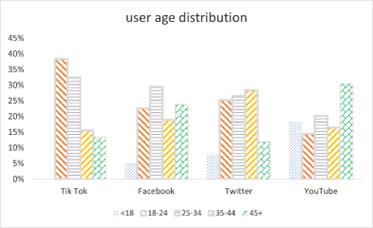
Figure 2: The age structure of new media users.
Figure 5 shows that the TikTok e-commerce market has apparent preferences for clothing and fashion products, especially beauty care products, with a high correlation to women’s and women’s wear, which have been kept in the top three in the GMV ranking of various countries. On the one hand, young users and female users are there. On the other hand, fashion and clothing products with a high correlation with women have considerable sales in the global market. TikTok’s new e-commerce model combines its user characteristics in terms of sales strategy—the willingness and ability of different groups to consume after the epidemic.
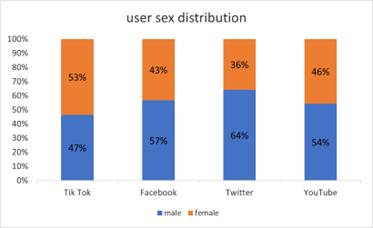
Figure 3: Gender comparison of new media users.
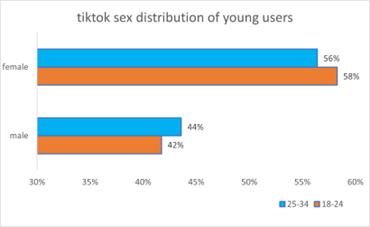
Figure 4: TikTok gender comparison of young users.
Table 1 shows the statistics of TikTok’s top 50 stores on August 14. Whether consumers ‘shopping preferences are measured in terms of the number of stores or from the sales volume, consumers’ preferences are like the above statistical results. Among them, the sales volume of beauty and women’s clothing products is greatly leading, and Muslim fashion and fashion-matching products are also on the list, which consumers welcome. Excluding beauty makeup products, women’s products, Muslim fashion, and maternal and infant products, the four types of goods are defined as “relatively low correlation” (“Table 1” low association “). The number of these goods reached nearly half, but the total sales are low, accounting for only 37.25% of the total sales of all stores in the statistics. The e-commerce market has recently shown a diversification of best-selling commodities. At the same time, the types of goods related to the “youth” and “female” entries are still dominant, driving the development of TikTok e-commerce. This conclusion is consistent with the results obtained in the above preliminary research.
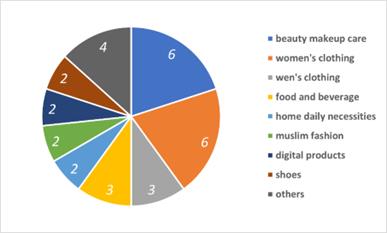
Figure 5: Statistics of popular goods in various countries.
Table 1: Statistics of best-selling goods in the TikTok e-commerce market.
Type |
The number of shops |
Total sales (thousand) |
beauty makeup care |
11 |
172.5 |
women’s dress |
14 |
169.2 |
home daily necessities |
2 |
95.9 |
Mother and baby products |
1 |
51.8 |
computer |
8 |
31.1 |
travel case |
2 |
25.2 |
pet products |
2 |
23.3 |
Mobile phone and digital products |
1 |
22.0 |
kitchen utensils |
2 |
17.5 |
Muslim fashion |
1 |
17.4 |
fashion collocation |
2 |
10.9 |
home textile cloth art |
3 |
9.5 |
shoes |
1 |
7.5 |
sum |
50 |
653.8 |
low association |
23 |
242.9 |
Table 2 Statistics on the types of goods recommended on TikTok. The criteria for statistics is that as of August 15, 2023, a product has been recommended by TikTok. Summarize the types of goods, the average commission, and the number of bloggers recommended each item. The statistical results show that the total number of recommended beauty care products far exceeds other products, reaching 2,807 bloggers. Moreover, the average commission on beauty care products is also higher. One of the direct reasons for the high number of bloggers willing to participate in beauty care products is the higher average commission. Higher commission on behalf of the store propaganda cost is higher, at the same time considering that there are a large number of sales bloggers who choose to participate in and can participate in the beauty makeup care product marketing, compared with the statistics to other types of goods, beauty makeup care goods greater demand for propaganda, internal competition is more intense, the beauty makeup care product market is more active.
Table 2: Statistics on the types of goods most recommended by bloggers.
Type |
Numbers of goods |
Average commission |
Total number of bloggers |
beauty makeup care |
17 |
14.5% |
2807 |
healthcare product |
8 |
22.6% |
1438 |
kitchen utensils |
6 |
9.7% |
822 |
digital products |
5 |
8.8% |
823 |
home daily necessities |
4 |
8.8% |
805 |
women’s dress |
2 |
10.5% |
263 |
mother and baby product |
2 |
7.0% |
286 |
men’s clothing |
2 |
11.0% |
288 |
fashion collocation |
1 |
15.0% |
129 |
household electrical appliances |
1 |
5.0% |
148 |
computer |
1 |
10.0% |
149 |
shoes |
1 |
7.0% |
122 |
The third statistic is about the change in the number of bloggers who rely on publishing short videos to recommend products. In this study, 30 video bloggers with a rapidly growing number of fans from mid-July to mid-August collected data on fan changes, video release dates, the payback amount of each video, and the sales volume of video-recommended products. According to the existing statistical data analysis, almost all bloggers’ fan growth is not gradual but a ladder growth. After the release of the short video of the recommended products, if the recommended goods sell well, the number of fans will proliferate in the next 5-7 days, and then stop this rapid growth and maintain the existing number of fans. These videos are released on the day when the number of followers starts to rise, and the rapid growth of followers often appears in a row, even recurring in a month while the quality of the video is guaranteed. Videos with rapidly growing followers will also have higher sales and page views than the blogger’s other promotional videos, usually several times the average. Combined with the previous statistics and research, can infer that TikTok found potential sales bloggers of a short video relative to the original video better sales, the official will immediately support them, more not his original fans recommend such products, to realize the rapid construction of network celebrities, leading the increase in the number of fans and sales increased significantly.
4.Discussion
The results of the study match the hypothesis. According to the current statistical results, an essential reason for the success of TikTok is the excellent effort of propaganda work. The rapid growth of TikTok is based on promoting more exciting products to young users (especially young women), with both women’s wear and beauty care achieving great success. At the same time, TikTok cultivates new influencers by attracting potential sales bloggers. These new influencers will also increase the competitiveness of TikTok in the online e-commerce and the new media market and attract more users to use TikTok. In this development environment, TikTok’s new e-commerce model has formed a win-win situation among e-commerce merchants, bloggers, and TikTok, promoting more merchants and Internet influencers to join TikTok.
After statistical analysis, this study believes it is difficult to replicate the new e-commerce model of TikTok: 1) Sufficient user groups are the basis for ensuring the number of customers for TikTok’s e-commerce model. For other social software with limited user groups, ensuring enough users are willing to spend money is a challenge. 2) The rise of the mobile store largely depends on the user distribution of the dominant user groups. Other existing large new social media platforms also have their dominant user groups in their user distribution, and different consumption groups will strengthen. Consumption preference is different, leading to the TikTok new electricity model not necessarily applicable to other new media platforms. 3) For the existing large social media companies, their income organization is stable, the existing capital planning is relatively straightforward, whether it is necessary and ability to provide resources to create a similar TikTok Shop electronic commerce platform and an algorithm for user shopping behavior data analysis center is also the companies must consider.
The study also has some limitations. When analyzing user groups, the selected label selection is “youth” and “female,” with an extensive range. Meanwhile, it needs more data for each month in the first half of 2023, and the total data for the first half of 2023 is used, so it is challenging to study the changing trend of shopping preferences.
5.Conclusion
This study found that products closely related to “women” and “fashion” labels in TikTok’s e-commerce market sell well, with more bloggers recommending these products, and bloggers can get more financial returns. TikTok: The official behavior of cultivating and potential sales bloggers, such as increasing traffic for potential bloggers. This behavior can also make the store owners get better sales effects and attract more traffic to TikTok. In general, the success of TikTok’s new e-commerce model can be attributed to two points: 1) In the development of the e-commerce market, it should combine the characteristics of its user groups and formulate corresponding marketing ideas, such as helping some sales bloggers grow and promote more beauty and personal care products. 2) TikTok’s new e-commerce model creates a win-win model for software, merchants, and bloggers, which attracts more e-commerce and bloggers to join, attracts more users to participate in shopping, and effectively expands the international market. The main contribution of this research is to analyze why TikTok’s new e-commerce model rapidly opened the international market and to provide a reference for social e-commerce and new media companies that hope to open up the international market later. The current research has not detailed phased research of the whole TikTok opening the international market. Therefore, the following research should focus on the new e-commerce model of TikTok at different development stages, collect different data, and study them separately.
Authors Contribution
All the authors contributed equally and their names were listed in alphabetical order.
References
[1]. Almahdi, M. H. (2021, March). Social commerce: a concept explication. In European, Asian, Middle Eastern, North African Conference on Management & Information Systems (pp. 398-404). Cham: Springer International Publishing.
[2]. Murugesan, S. (2007). Understanding Web 2.0. IT professional, 9(4), 34-41.
[3]. Kumah, M. (2017). The role of social media as a platform for E-commerce.
[4]. Demiroglu, N. (2021). E-commerce as a tool for the development of small business. In SHS Web of Conferences (Vol. 106, p. 01022). EDP Sciences.
[5]. Brătianu, C., Zbuchea, A., Pînzaru, F., Leon, R. D., & Vătămănescu, E. M. Opportunities and Risks in the Contemporary Business Environment.
[6]. Urdea, A. M., & Constantin, C. P. (2021). Exploring the impact of customer experience on customer loyalty in e-commerce. In Proceedings of the International Conference on Business Excellence (Vol. 15, No. 1, pp. 672-682).
[7]. Smits, M., & Mogos, S. (2013). The impact of social media on business performance.
[8]. Ebrahimi, P., Basirat, M., Yousefi, A., Nekmahmud, M., Gholampour, A., & Fekete-Farkas, M. (2022). Social networks marketing and consumer purchase behavior: the combination of SEM and unsupervised machine learning approaches. Big Data and Cognitive Computing, 6(2), 35.
[9]. Peng, Y. (2021, August). TikTok’s Business Model Innovation and Development-Porter’s Five Forces Model, Business Model Canvas and SWOT Analysis as Tools. In 1st International Symposium on Innovative Management and Economics (ISIME 2021) (pp. 482-489). Atlantis Press.
[10]. Li, Y., Yang, W., & Zhou, Y. (2023). Research on the Profit Model of Tiktok Live Broadcast E-commerce Platform. Highlights in Business, Economics and Management, 11, 77-82.
Cite this article
Li,J.;Liang,Q.;Yang,Y.;Yuan,R. (2023). Analysis of Tiktok’s E-commerce Model in Overseas Markets. Communications in Humanities Research,22,20-28.
Data availability
The datasets used and/or analyzed during the current study will be available from the authors upon reasonable request.
Disclaimer/Publisher's Note
The statements, opinions and data contained in all publications are solely those of the individual author(s) and contributor(s) and not of EWA Publishing and/or the editor(s). EWA Publishing and/or the editor(s) disclaim responsibility for any injury to people or property resulting from any ideas, methods, instructions or products referred to in the content.
About volume
Volume title: Proceedings of the 2nd International Conference on Interdisciplinary Humanities and Communication Studies
© 2024 by the author(s). Licensee EWA Publishing, Oxford, UK. This article is an open access article distributed under the terms and
conditions of the Creative Commons Attribution (CC BY) license. Authors who
publish this series agree to the following terms:
1. Authors retain copyright and grant the series right of first publication with the work simultaneously licensed under a Creative Commons
Attribution License that allows others to share the work with an acknowledgment of the work's authorship and initial publication in this
series.
2. Authors are able to enter into separate, additional contractual arrangements for the non-exclusive distribution of the series's published
version of the work (e.g., post it to an institutional repository or publish it in a book), with an acknowledgment of its initial
publication in this series.
3. Authors are permitted and encouraged to post their work online (e.g., in institutional repositories or on their website) prior to and
during the submission process, as it can lead to productive exchanges, as well as earlier and greater citation of published work (See
Open access policy for details).
References
[1]. Almahdi, M. H. (2021, March). Social commerce: a concept explication. In European, Asian, Middle Eastern, North African Conference on Management & Information Systems (pp. 398-404). Cham: Springer International Publishing.
[2]. Murugesan, S. (2007). Understanding Web 2.0. IT professional, 9(4), 34-41.
[3]. Kumah, M. (2017). The role of social media as a platform for E-commerce.
[4]. Demiroglu, N. (2021). E-commerce as a tool for the development of small business. In SHS Web of Conferences (Vol. 106, p. 01022). EDP Sciences.
[5]. Brătianu, C., Zbuchea, A., Pînzaru, F., Leon, R. D., & Vătămănescu, E. M. Opportunities and Risks in the Contemporary Business Environment.
[6]. Urdea, A. M., & Constantin, C. P. (2021). Exploring the impact of customer experience on customer loyalty in e-commerce. In Proceedings of the International Conference on Business Excellence (Vol. 15, No. 1, pp. 672-682).
[7]. Smits, M., & Mogos, S. (2013). The impact of social media on business performance.
[8]. Ebrahimi, P., Basirat, M., Yousefi, A., Nekmahmud, M., Gholampour, A., & Fekete-Farkas, M. (2022). Social networks marketing and consumer purchase behavior: the combination of SEM and unsupervised machine learning approaches. Big Data and Cognitive Computing, 6(2), 35.
[9]. Peng, Y. (2021, August). TikTok’s Business Model Innovation and Development-Porter’s Five Forces Model, Business Model Canvas and SWOT Analysis as Tools. In 1st International Symposium on Innovative Management and Economics (ISIME 2021) (pp. 482-489). Atlantis Press.
[10]. Li, Y., Yang, W., & Zhou, Y. (2023). Research on the Profit Model of Tiktok Live Broadcast E-commerce Platform. Highlights in Business, Economics and Management, 11, 77-82.





